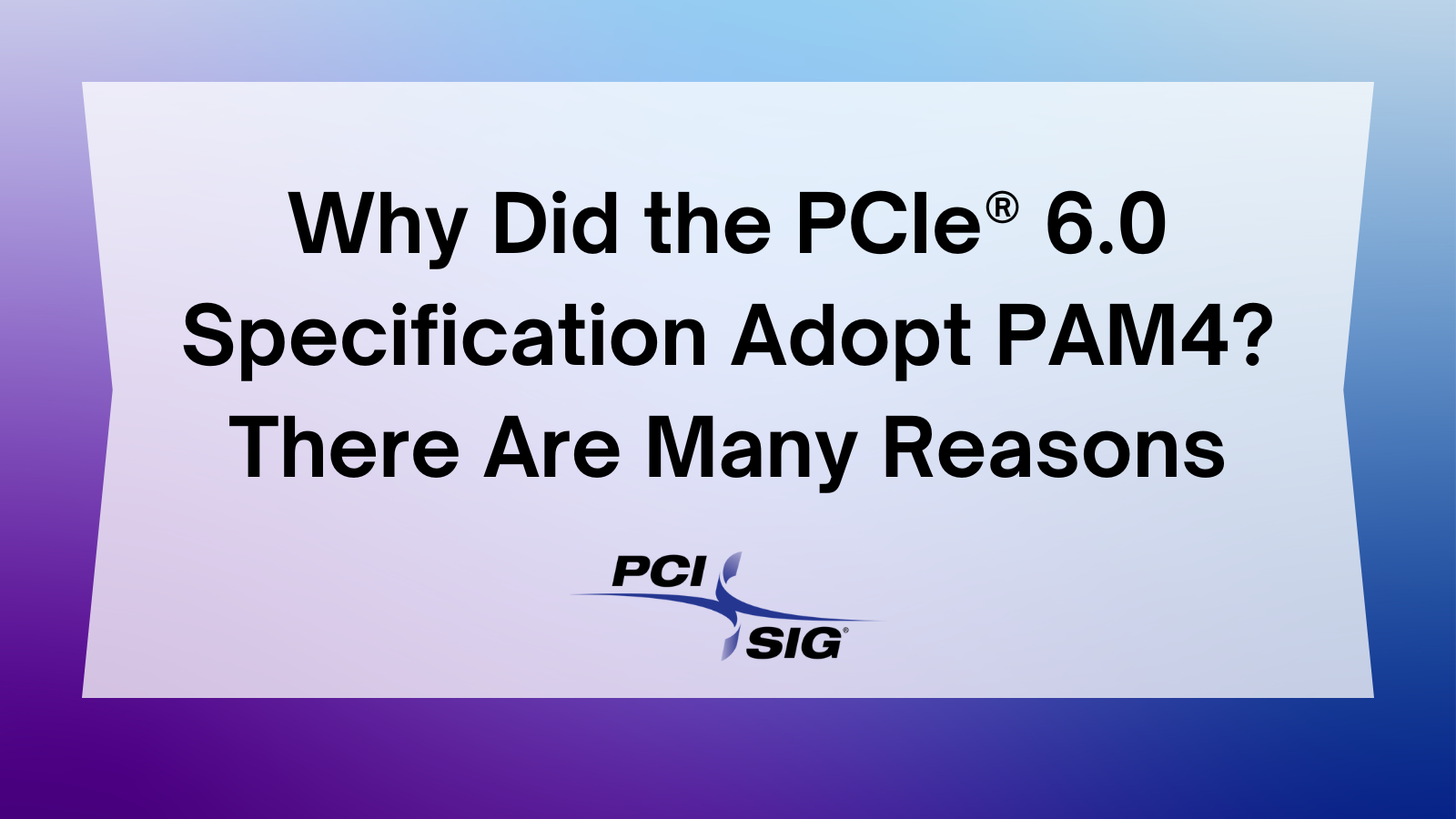Why Did the PCIe® 6.0 Specification Adopt PAM4? There Are Many Reasons

In early 2022, PCI-SIG® released the full version of the PCI Express® (PCIe®) 6.0 specification. As with previous versions, the latest version doubles the data rate of PCIe 5.0 specification and maintains backwards compatibility.
Key features of the latest PCIe 6.0 specification include:
- 64 GT/s data rate and up to 256 GB/s via x16 configuration
- PAM4 signaling leverages existing PAM4 already available in the industry
- Lightweight FEC and CRC mitigate the bit error rate increase associated with PAM4 signaling
- Flit-based encoding supports PAM4 modulation and enables >2X bandwidth gain
- Updated Packet layout used in Flit Mode to provide additional functionality and simplify processing
- Maintains backwards compatibility with all previous generations of PCIe technology
What Is PAM4?
PAM stands for pulse amplitude modulation, and the number four stands for the number of signaling levels. Most engineers are familiar with NRZ modulation, or non-return to zero. NRZ uses two levels of signaling. When Vcc ~ 0V, a logic “0” is pass. When Vcc ~ 1.8/3.3/5V, a logic “1” is pass. Each unit interval sends a zero or a one, or one bit. So NRZ is basically a PAM2.
PAM4 is a multi-level that uses four levels of signaling. There are basically four levels of signaling that correspond to Vcc ~ 0V, Vcc/3, (2*Vcc)/3 and Vcc. Each unit interval sends two bits instead of one. It sends either a 0-0, 0-1, 1-0, or 1-1. The graph below illustrates the differences in detail.

In general, NRZ modulation supports an eye diagram that has one “eye.” For the PCIe 5.0 specification, the “eye” has a specific eye height and voltage level depending on the defined channel length. PAM4 modulation eye diagrams support three “eyes.” For the PCIe 6.0 specification, each “eye” also has a defined eye height and voltage level for a specific signal channel.

Why Did the PCIe 6.0 Specification Adopt PAM4?
Previous PCIe specifications have been NRZ or PAM2. The PAM4 specification has been adopted by other networking standards, starting with 56 Gbps, 112 Gbps, and in the future, 224 Gbps. Precedent exists in other standards for PAM4.
PAM4 signaling enables a doubling of the data rate while using the same Nyquist frequency of a corresponding NRZ modulation schematic. For example, PCIe 5.0 architecture uses a Nyquist frequency of 16 GHz. Using PAM4 modulation, PCIe 6.0 architecture uses the same Nyquist frequency of 16 GHz, yet the data rate doubles to 64 GT/s per link and up to 256 GB/s bidirectional bandwidth via a x16 configuration.
What Are the Advantages of PAM4 vs. NRZ?
PAM4 reduces channel loss because it operates at half the frequency with two bits per UI. This enables the PCIe 6.0 specification’s channel reach to be similar to what the PCIe 5.0 specification delivers. PAM4 modulation in PCIe 6.0 specification may even allow for less loss and extended reach.
Another way to look at this is, for the same signal frequency, you can double the data rate, or increase the bandwidth or throughput for next-generation applications.
What Applications Does the PCIe 6.0 Specification Enable?
PAM4 enables PCIe 6.0 specification to provide the bandwidth required for high data-rate applications such as Data Center, Artificial Intelligence/Machine Learning, HPC, Automotive, IoT and Military/Aerospace.
All of these applications require a high data rate, so doubling it from the PCIe 5.0 specification to the PCIe 6.0 specification allows the specification to meet the demands required by these markets.
Please visit www.pcisig.com for more information and videos on PCIe technology. Visit www.samtec.com to learn more about their work with PCIe technology.
